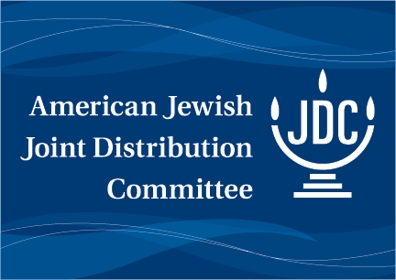The world is indeed a better place due to the achievements of the Jewish state of Israel, it’s simply the case, only a hardened anti-Israel ideologue/anti-Semite would dare to declare differently. The Tundra Tabloids has posted on many of these achievements over the years that have indeed benefited the world, as well as Israeli aid given to trouble spots and areas of catastrophe, which in spite of some states rejection of their offer for help, still receive these offers nonetheless. The olive branch is always there for the taking.
Here is another excellent example of existing Israeli models that can be used to benefit other communities, (and no charge for the advice) that Dr.Manfred Gerstenfeld expounds upon in an article published yesterday at YNET. It’s republished here with the permission of the author.
Exporting Israel-Diaspora Relations
Manfred Gerstenfeld
The Jewish Diaspora has been one of Israel’s greatest assets. It has provided immigrants, political support, volunteers, advisers, investments, loans, donations, technology, business contacts, and tourism. It has made cultural contributions, fostered sports activities and sports centers. The list of Diaspora contributions is long and more examples in many additional areas can be added.
Israelis would be reminded daily of some of these contributions if they opened their eyes. How many of those who pass by the Azrieli Center in Tel Aviv realize that it is an investment from the Diaspora? The Diaspora’s influence is even more visual in Jerusalem. The Hadassah Hospital, the Sherover Theater and the Supreme Court building are just a few examples of gifts from the Diaspora. So are many of the Israel Museum’s buildings along with parts of its collections. The list of assistance from Jews abroad to Israel’s capital is almost limitless.
There are many other nations which benefit from the help of their own Diaspora, mainly through the transfer of monies from migrants. Yet none draw as wide a range of benefits as Israel does. The Chinese probably come closest.
Israel-Diaspora relations as a model to be copied could be a valuable asset to promote to other nations. I spoke and published on this topic during the second half of the 1990’s, yet there were no reactions at all.1 Apparently, the idea’s time had not yet come and the time lag was long. When Israeli Deputy Foreign Minister Daniel Ayalon met with his Greek counterpart earlier this year, they decided to hold a joint conference on benefits to be drawn from Diaspora relations. This was planned for Saloniki next month, but has been delayed due to the Geek government crisis.
The American Joint Distribution Committee in Israel has, without much publicity, been working for a number of years on promoting concepts for developing Diaspora-homeland relations based on the Israeli model. This is mainly with countries which have a relatively modest GNP. Next month an international conference on this subject is planned in Jerusalem together with the Ministry of Public Diplomay and Diaspora Relations and the Ministry of Foreign affairs.
Many practices around Diaspora-Israel relations have been developed in Israel. One might call them “rituals.” For instance, a major donor can expect the object of his donation to be named after him. There should also be an initiation ceremony.
Of all the Israeli institutions raising money, few have as varied a program of rituals as the Jewish National Fund. The tree certificate, inauguration ceremonies in the forest including a special prayer, the plaques put up there and the publication of donor names in the newspapers, are only a few elements of this.
In today’s deteriorating world economy, many countries could gain greatly by improving relations with their Diasporas. In Israel these relations grew haphazardly and can be improved further. Many other countries could start with a systematic assessment of this subject from scratch. They would have to analyze first how large their Diaspora is and in which countries it is located. Such a study would have to identify particularly interesting emigrants such as wealthy people who can invest or donate, and others who possess valuable knowhow.
In some countries such as Italy, the link of emigrants with the country of origin of grandparents may not be deep and few even speak Italian. Yet there is certainly an affinity for the town where their ancestors came from. That is another segment to be studied, as these migrants mainly originated in the country’s poorest areas.
Such an integrated approach to promoting homeland-Diaspora relations would also have to include assessing cultural factors. In some pilot case studies in Italy and Greece which I conducted for major companies, there was resistance from many prominent locals who said: “This will not work here.”
Once one is involved in a field like this, other similar projects become possible. When I advised the chairman of a large Greek cement company on environmental and social issues, I suggested that one could adapt and modify some ideas from the JNF. The yards of the concrete companies which bought their cement were usually very dirty. The cement company then offered to plant saplings in part of their clients’ yards, for which it would pay. This led to the cleaning of all facilities by the owners. These plantings became highly publicized events in various towns. Governors and mayors came to plant the first saplings. The tree with my nameplate near it in a concrete company’s yard in the provincial capital of Karditsa may still be growing.
Systematically running programs to improve home country/Diaspora relations abroad would not be costly for Israel. The main beneficiaries of this would be those countries which will make better use of their own Diaspora resources. The benefit to Israel will come from gaining both new friends worldwide and good publicity via the useful advisory services it could provide.

